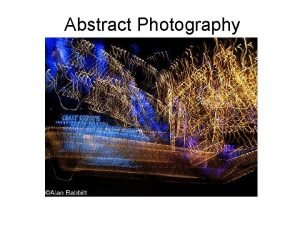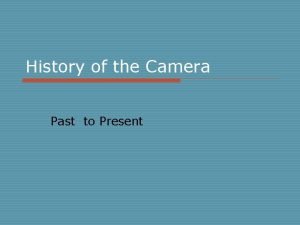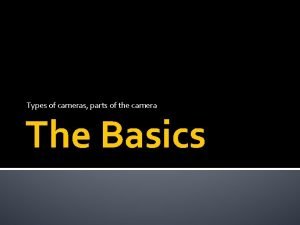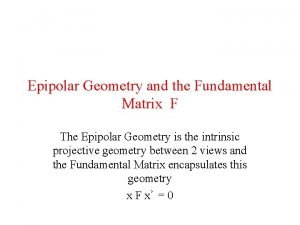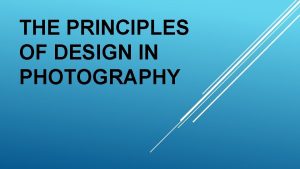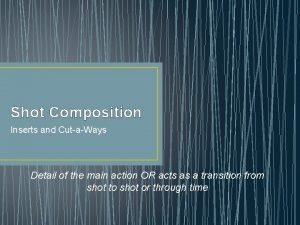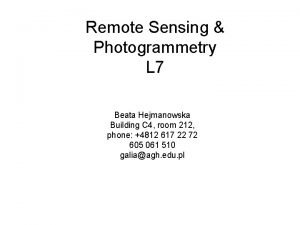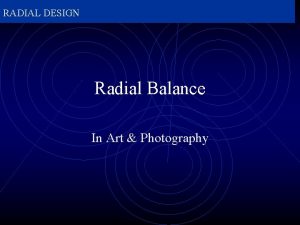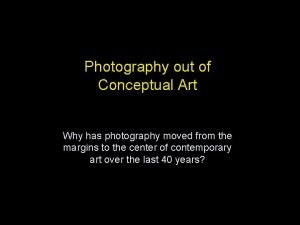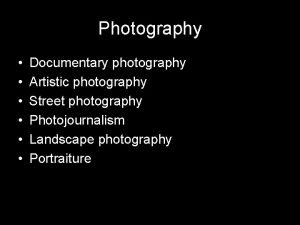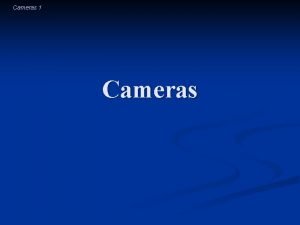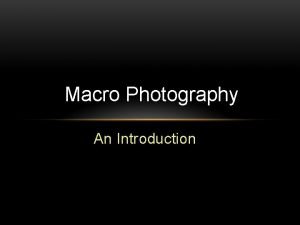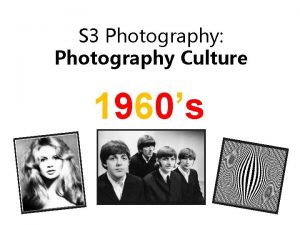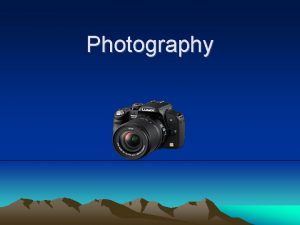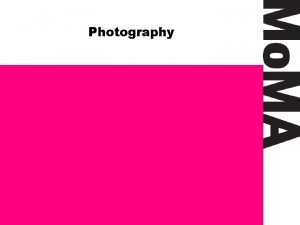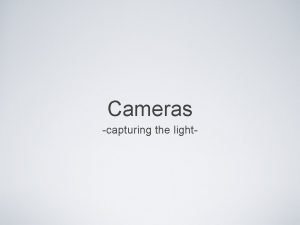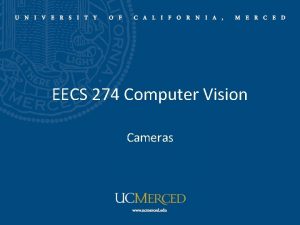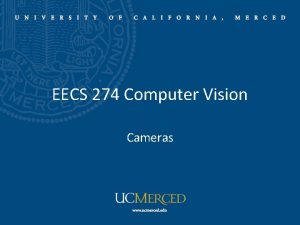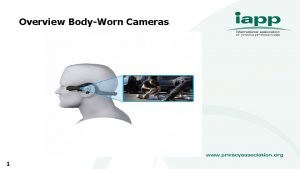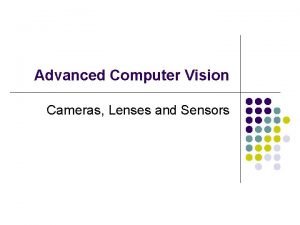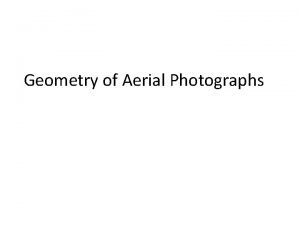Photography Types of Cameras Types of Cameras n



















- Slides: 19

Photography Types of Cameras


Types of Cameras n Film Cameras -Rangefinder Camera -35 mm (Compact, SLR) -Medium Format , Large Format -Polaroid -Pinhole Camera n Digital Cameras - Compact and SLR - Medium and Large Format

Film Cameras vary based on the size of their negatives: 35 mm film cameras -Most commonly used – smaller size Medium format cameras -measured in cm (6 x 6, 6 x 9, etc…) Large format cameras -measured in inches ( 4 x 5 inches, 8 x 10 inches, etc…)


Types of Cameras The main categories of Camera: 1. Point and Shoot (Compact) –Film or Digital (usually fully automatic) 2. Single Lens Reflex (SLR) -Film or Digital -(exchangeable lenses and flashes)

The SLR Camera The Single Lens Reflex Camera n This camera is portable and extremely adaptable. n The original design has now evolved into a multiplicity of models, the majority of which have a formidable array of lenses and accessories. n When you look through the viewfinder of an SLR camera … what you see is what the lens “sees”.

The SLR Camera How Canon DSLR Cameras Work - You. Tube

The SLR Camera Canon 35 mm SLR Olympus 35 mm SLR

3. Rangefinder

The Rangefinder Camera Although the Rangefinder does not have quite as wide a range of accessories as the SLR, it is a sturdy and reliable camera. The Rangefinder is available in 35 mm or medium format models.

The Rangefinder Camera This is a camera that is very popular with professional photographers. n The most famous brand is the Leica. n In contrast to the SLR, the rangefinder allows the subject to be seen through a separate viewfinder rather than through the lens. n When the lens is focused on the subject, these two images become aligned with one another and the picture will then be sharp. n

n 4. Medium Format Cameras n 5. Large Format Cameras

Medium Format Camera

The Large Format Camera This is a large format, tripod-mounted camera which takes photographs where the transparencies or negatives are 5 x 4 inches. n The film is loaded into dark slides, each one holding just two sheets. n There is no viewfinder in the conventional sense: the image is seen upside-down and back-to-front on a ground glass screen. n In order to see the image and keep out any stray light the photographer covers the camera and his head with a dark cloth. n

The Large Format Camera The range of applications of the 5 x 4 camera is varied both in the studio and on location. It produces pictures with excellent clarity and sharpness of detail.

n 6. Polaroid Cameras n 7. Pin Hole Cameras

The Instant and Polaroid Camera As well as providing an immediate image of the subject, these cameras also offer as many possibilities for creative photography as their conventional counterparts.

The Instant and Polaroid Camera Instant picture cameras such as the Polaroid offer another dimension to picture-taking. n After the picture is taken, the film is impregnated with the chemicals required for processing the image and the picture begins to appear only seconds after the shutter is pressed. n Development is complete within minutes. n
 Is abstract photography same as conceptual photography
Is abstract photography same as conceptual photography Camera past and present
Camera past and present Speed detection of moving vehicle using speed cameras ppt
Speed detection of moving vehicle using speed cameras ppt Parts of cameras
Parts of cameras What is stem-and-leaf plot
What is stem-and-leaf plot Image formation in camera
Image formation in camera Canonical cameras
Canonical cameras Ionising radiation bbc bitesize
Ionising radiation bbc bitesize Types of documentary photography
Types of documentary photography Cindy sherman history
Cindy sherman history Is a consistent, orderly or pleasing arrangement of parts.
Is a consistent, orderly or pleasing arrangement of parts. Elements of art color photography
Elements of art color photography First photograph of a person
First photograph of a person Insert shot
Insert shot Photo shot list template
Photo shot list template Nadir point in aerial photography
Nadir point in aerial photography Radial photography
Radial photography R090 digital photography
R090 digital photography Product photography ads
Product photography ads Anselm kiefer heroic symbols
Anselm kiefer heroic symbols
